PHOSPHORUS PENTAFLUORIDE
- CAS NO.:7647-19-0
- Empirical Formula: F5P
- Molecular Weight: 125.97
- MDL number: MFCD00040326
- EINECS: 231-602-3
- SAFETY DATA SHEET (SDS)
- Update Date: 2024-12-18 14:15:30
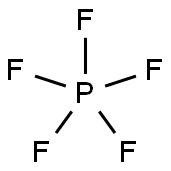
What is PHOSPHORUS PENTAFLUORIDE?
Chemical properties
colorless gas; nonflammable; fumes strongly in air; high thermal stability; critical temp 144.5°C; critical pressure 3.39MPa; enthalpy of fusion 12.1 kJ/mol; enthalpy of vaporization 17.2 kJ/mol; can be prepared by reaction of PF3 with F2; used as a polymerization catalyst and in electronics industry [AIR87] [HAW93] [MER06] [CRC10] [KIR78]
Physical properties
Colorless gas; fumes in air; density 5.527g/L; heavier than air, density in air 4.35 (air=1); liquefies at -84.6°C; freezes at -93.8°C; reacts with water.
The Uses of PHOSPHORUS PENTAFLUORIDE
Phosphorus pentafluoride is usedas a catalyst in polymerization reactions.
The Uses of PHOSPHORUS PENTAFLUORIDE
Catalyst in ionic polymerization reactions.
Definition
ChEBI: Phosphorus pentafluoride is a phosphorus halide.
General Description
PHOSPHORUS PENTAFLUORIDE is a colorless, poisonous, nonflammable, compressed gas with a pungent odor. PHOSPHORUS PENTAFLUORIDE is extremely irritating to skin, eyes and mucus membranes. PHOSPHORUS PENTAFLUORIDE is very toxic by inhalation and can cause pulmonary edema. Toxic and corrosive fumes are generated when PHOSPHORUS PENTAFLUORIDE is exposed to water or steam. Prolonged exposure of the containers to fire or heat may result in their violent rupturing and rocketing. PHOSPHORUS PENTAFLUORIDE is used as a polymerization catalyst.
Air & Water Reactions
Fumes strongly in air, with traces of moisture forming POF3 and HF (corrosive). Decomposed in water or moist air to form phosphoric acid and hydrofluoric Acid, corrosive [Merck 11th ed. 1989].
Reactivity Profile
PHOSPHORUS PENTAFLUORIDE is a colorless, toxic gas, when exposed to air PHOSPHORUS PENTAFLUORIDE strongly fumes. Vigorous reaction with water or steam leads to decomposition (hydrolysis) producing toxic and corrosive fumes. When heated to decomposition PHOSPHORUS PENTAFLUORIDE emits toxic fumes of fluoride and oxides of phosphorus [Lewis, 3rd ed., 1993, p. 1034].
Hazard
Phosphorus pentafluoride is a highly toxic gas. Inhalation can cause severe irritation of mucous membrane and pulmonary edema. It is corrosive to skin and can damage eyes.
Health Hazard
TOXIC; may be fatal if inhaled, ingested or absorbed through skin. Vapors are extremely irritating and corrosive. Contact with gas or liquefied gas may cause burns, severe injury and/or frostbite. Fire will produce irritating, corrosive and/or toxic gases. Runoff from fire control may cause pollution.
Health Hazard
Phosphorus pentafluoride is highly irritating to the skin, eyes, and respiratory tract. Exposure to this gas can cause pulmonary edema and lung injury. The LC50 value for this compound is not reported. The concentration in air at which it may be lethal to mice over a 10-minute exposure period is estimated to be about 400 ppm (~2050 mg/m3).
Fire Hazard
Some may burn but none ignite readily. Vapors from liquefied gas are initially heavier than air and spread along ground. Some of these materials may react violently with water. Cylinders exposed to fire may vent and release toxic and/or corrosive gas through pressure relief devices. Containers may explode when heated. Ruptured cylinders may rocket.
Safety Profile
A poisonous gas. Violently irritating to skin, eyes, and - mucous membranes. Inhalation may cause pulmonary edema. Reacts with water or steam to produce toxic and corrosive fumes. When heated to decomposition it emits highly toxic fumes of Fand POx. See also FLUORIDES.
Waste Disposal
Phosphorus pentafluoride is destroyed by bubbling the gas through a solution of caustic soda (in excess) at a cold temperature. The alkaline mixture is neutralized slowly by dilute HCl and washed down the drain.
Properties of PHOSPHORUS PENTAFLUORIDE
| Melting point: | -83°C |
| Boiling point: | -75°C |
| Density | 5.805g/l |
| RTECS | TH4070000 |
| Flash point: | -84.6°C |
| solubility | reacts with H2O |
| form | Gas |
| color | Colorless |
| Water Solubility | hydrolyzed in H2O, eventually to H3PO4 [MER06] |
| Sensitive | Moisture Sensitive |
| Merck | 14,7352 |
| Exposure limits | TLV-TWA 2.5 mg(F)/m3 (ACGIH and OSHA). |
| CAS DataBase Reference | 7647-19-0(CAS DataBase Reference) |
| EPA Substance Registry System | Pentafluorophosphorane (7647-19-0) |
Safety information for PHOSPHORUS PENTAFLUORIDE
| Pictogram(s) |
 Corrosion Corrosives GHS05  Skull and Crossbones Acute Toxicity GHS06 |
| GHS Hazard Statements |
H314:Skin corrosion/irritation H318:Serious eye damage/eye irritation H330:Acute toxicity,inhalation |
| Precautionary Statement Codes |
P320:Specific treatment is urgent (see … on this label). P303+P361+P353:IF ON SKIN (or hair): Remove/Take off Immediately all contaminated clothing. Rinse SKIN with water/shower. P304+P340:IF INHALED: Remove victim to fresh air and Keep at rest in a position comfortable for breathing. P305+P351+P338:IF IN EYES: Rinse cautiously with water for several minutes. Remove contact lenses, if present and easy to do. Continuerinsing. P405:Store locked up. |
Computed Descriptors for PHOSPHORUS PENTAFLUORIDE
New Products
Tert-butyl bis(2-chloroethyl)carbamate (S)-3-Aminobutanenitrile hydrochloride N-Boc-D-alaninol N-BOC-D/L-ALANINOL 3-Morpholino-1-(4-nitrophenyl)-5,6-dihydropyridin- 2(1H)-one N-octanoyl benzotriazole 3,4-Dibenzyloxybenzaldehyde 1,1’-CARBONYLDIIMIDAZOLE R-2-BENZYLOXY PROPIONIC ACID 1,1’-CARBONYLDI (1,2-4 TRIAZOLE) 4-HYDROXY BENZYL ALCOHOL 3-NITRO-2-METHYL ANILINE (2-Hydroxyphenyl)acetonitrile 4-Bromopyrazole 5-BROMO-2CYANO PYRIDINE 5,6-Dimethoxyindanone 5-broMo-2-chloro-N-cyclopentylpyriMidin-4-aMine 2-(Cyanocyclohexyl)acetic acid 4-methoxy-3,5-dinitropyridine 2-aminopropyl benzoate hydrochloride 1-(4-(aminomethyl)benzyl)urea hydrochloride tert-butyl 4- (ureidomethyl)benzylcarbamate diethyl 2-(2-((tertbutoxycarbonyl)amino) ethyl)malonate Ethyl-2-chloro((4-methoxyphenyl)hydrazono)acetateRelated products of tetrahydrofuran
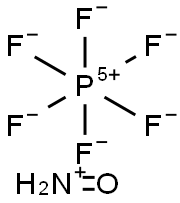
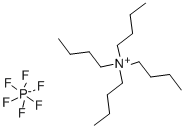
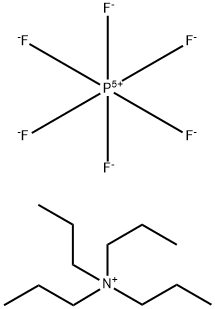




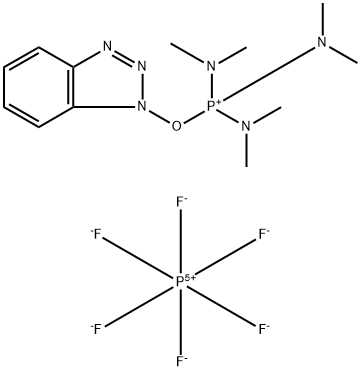
You may like
-
 N-Vinylformamide 99%View Details
N-Vinylformamide 99%View Details
13162-05-5 -
 Chloro Uracil 1820-81-1 99%View Details
Chloro Uracil 1820-81-1 99%View Details
1820-81-1 -
 2-ethyl-6-methyl-3-hydroxypyridine succinate 99%View Details
2-ethyl-6-methyl-3-hydroxypyridine succinate 99%View Details
127464-43-1 -
 2-ETHYLPYRIDINE 100-71-0 99%View Details
2-ETHYLPYRIDINE 100-71-0 99%View Details
100-71-0 -
 7439-89-6 Electrolytic Iron Flakes 99.9% MaxView Details
7439-89-6 Electrolytic Iron Flakes 99.9% MaxView Details
7439-89-6 -
 7439-89-6 98.0% MinView Details
7439-89-6 98.0% MinView Details
7439-89-6 -
 Reduced Iron Powder 99.8% MaxView Details
Reduced Iron Powder 99.8% MaxView Details
7439-89-6 -
 Electrolytic Iron Powder 7439-89-6 99.8% MaxView Details
Electrolytic Iron Powder 7439-89-6 99.8% MaxView Details
7439-89-6